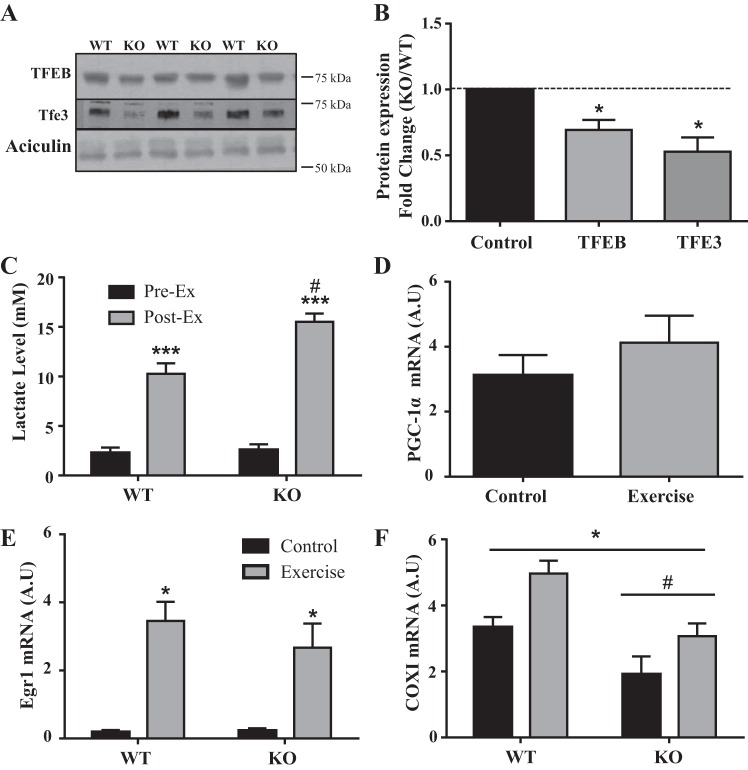Fig. 5.
Effect of peroxisome proliferator-activated receptor-γ coactivator-1α (PGC-1α) and in vivo exercise on gene expression and transcription factor EB (TFEB) protein. A: Western blots of TFEB and its family member transcription factor E3 (TFE3) in wild-type (WT) and PGC-1α knockout (KO) mice. Aciculin was used as a loading control. B: corresponding graph of quantified blots (n = 7–9; *P < 0.05 WT vs. KO; Student’s t-test on raw data). C: WT and PGC-1α KO animals were subjected to an exhaustive bout of exercise. Lactate levels were measured before (Pre-Ex) and after exercise (Post-Ex) (n = 9; ***P < 0.001 preexercise vs. postexercise; #P < 0.05 WT vs. KO postexercise; 2-way ANOVA). mRNA levels of early response genes and mitochondrial markers. D: PGC-1α (exercise vs. nonexercise in WT mice only). mRNA levels in WT and PGC-1α KO mice before and after an acute bout of exercise. E: early growth response protein-1 (Egr1; *P < 0.001, exercise vs. control in both genotypes; 2-way ANOVA). F: cytochrome-c oxidase-I (COXI; n = 6–7; *P < 0.05, 2-way ANOVA produced a main effect of exercise; #P < 0.05, 2-way ANOVA produced a main effect of genotype). Gapdh and Actb were used as housekeeping genes. A.U, arbitrary units.

